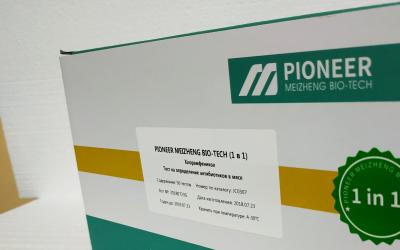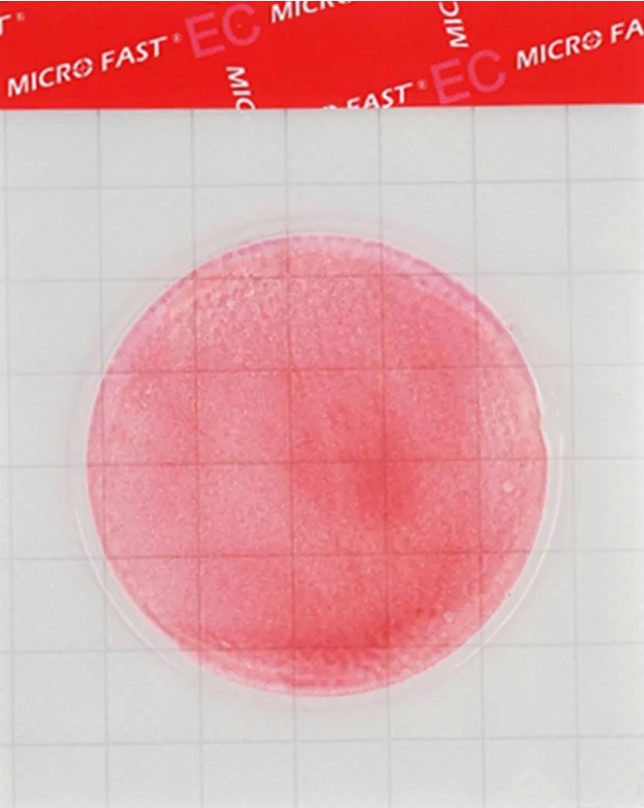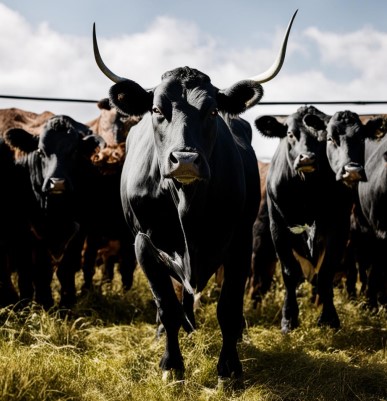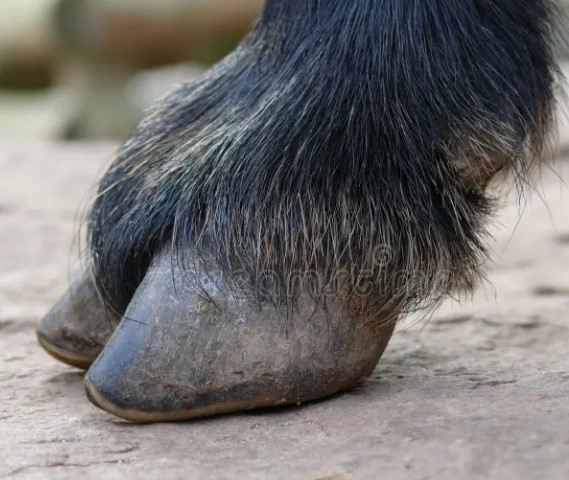Of all types of meat in Russia, only pork production is growing steadily

 Rapid tests for fluoroquinolone, erythromycin, lincomycin, tillosin and tilmycosin residues in milk, whey
Rapid tests for fluoroquinolone, erythromycin, lincomycin, tillosin and tilmycosin residues in milk, whey PIONEER MEIZHENG BIO-TECH (5 in1) JC0871/ Rapid tests for the determination of the residual amount of β-lactams, tetracyclines, chloramphenicol, streptomycins, ceftiofur in milk, whey.
PIONEER MEIZHENG BIO-TECH (5 in1) JC0871/ Rapid tests for the determination of the residual amount of β-lactams, tetracyclines, chloramphenicol, streptomycins, ceftiofur in milk, whey.
According to the Russian Ministry of Agriculture, in January-August, the production of cattle for slaughter increased by 7% year on year - to 701.1 thousand tons. A representative of the ministry assumes that the volume of beef this year will be sufficient to meet the needs of the domestic market, and the further development of beef cattle breeding will be facilitated by expanding the geography of exports and increasing demand for beef .
The HEAD of one of the large MEAT processing plants, without going into details, noted that the positive dynamics in the beef segment is associated with the accelerated slaughter of livestock in some regions of RUSSIA.
In turn, NMA experts believe that the industry has entered a period of stagnation. Miratorg gives the same assessment of the situation: investment activity has practically stopped, because it has become unprofitable to produce beef in Russia, the holding’s management claims, the return on investment reaches 10–15 years.
NMA Executive DIRECTOR Sergei Yushin emphasized that players in the beef cattle breeding market are faced with low profitability, even negative. Only premium parts of the carcass of bulls of specialized breeds, that is, no more than 10% of its weight, can be sold at high prices. Moreover, the demand for them is small. The bulk of beef on the domestic market comes from dairy cows after they are culled, the head of an industry association said, and beef cattle breeding is under pressure from the sale of cheap cattle. Development is hampered by the expectations of consumers, regulators and processors who are accustomed to unreasonably low prices for beef.
General Director of Lipetsk Myaso LLC Sergei Oganov also noted the weak demand for beef, which in Russia is considered prohibitively expensive. Miratorg specialists do not see any particular prospects for growth in consumption due to competition from pork and poultry producers. According to Rosstat, at the end of September, a kilogram of beef in retail cost the consumer 505.69 rubles, while pork and chicken were sold for 335.63 rubles and 219.81 rubles, respectively.
The management of Miratorg considers duty-free import of 100 thousand tons of beef per year, which provides preferences to foreign producers, as an obstacle to growth. At the end of last year, the Eurasian Economic Commission (EEC), at the initiative of the Ministry of Agriculture of the Russian Federation, extended the duration of the benefit, explaining this by the need to provide meat processors with affordable raw materials. According to the analytical agency EMEAT, in the first half of 2023, Russia purchased 78.9 thousand tons of beef on foreign markets - 0.4% more than in the six months of last year.
Sergei Oganov does not rule out that the situation can be changed by long-term investments , impossible without government support, and the involvement of small and medium-sized businesses in beef production.
From the presentation presented by NMA, it is obvious that stagnation or slight growth is also observed in the poultry sector. At the end of the year, the total volume of poultry meat is predicted to be 5.35 million tons (+0.7%). President of the analytical company Agrifood Strategies Albert Davleev points out the limited possibilities of increasing poultry meat production due to the lack of support for rising costs caused by an increase in the key rate of the Central Bank, rising costs for personnel, veterinary drugs and logistics.
Sustainable growth is observed only in pig farming. This year, according to the NMA forecast, the volume of pork production may reach 4.8 million (+5.9%). The National Pig Union (NPU) expects growth of 4-5% and continued growth rates next year. NSS General Director Yuri Kovalev assesses the influx of investment as sufficient not only to completely saturate the domestic market, but also for EXPORT - primarily to CHINA . He added that an annual increase of 5–10% ensures a stable price, and, accordingly, an increase in demand for pork and an increase in consumption by 25–30%.
Read together with it:
- Зеленский ввел санкции против внука де Голля, Мизулиной и ГуцулПод новые санкции Украины попали десятки физических и юридических лиц, в том числе организации, действующие в Крыму, и ряд граждан Молдавии, которые, по словам Зеленского, «дестабилизируют» страну Владимир Зеленский Украинский президент Владимир Зеленский подписал указы о трех новых пакетах санкций в отношении России, документы опубликованы на сайте главы государства. Под ограничения попали, в час...
- Еврокомиссия предложила ограничить доступ России к технологиям ИИВ рамках 19-го пакета санкций Еврокомиссия хочет ограничить доступ России к технологиям ИИ и геоданным, заявила Каллас. Он также включает меры против российских банков и финансовых организаций. Москва считает санкции незаконными Еврокомиссия (ЕК) в рамках 19-го пакета санкций намерена ограничить доступ России к технологиям искусственного интеллекта и геоданным, заявила верховный представитель ЕС п...
- Democrats called for tougher sanctions against Russian energy companiesDemocrats wrote a letter to Rubio and Bessent asking them to consider tougher sanctions against Russian energy supplies. Trump himself has expressed his willingness to impose sanctions on the condition that all NATO countries follow the US lead. US Democratic senators have called on President Donald Trump's administration to reimpose targeted sanctions on Russian energy supplies. They sent a corre...
- Россия зарегистрировала новый штамм вируса, вызывающего диарею у крупного рогатого скотаВ текущее время существующие профилактические меры в основном основаны на штаммах первого генотипа, в то время как во многих странах фиксируются случаи заболеваний, связанных с вирусом второго генотипа. В России вакцин, охватывающих оба типа возбудителя, пока нет. Патент, зарегистрированный 21 августа, представляет собой важный шаг в обеспечении отечественного животноводства современными средствам...
- Россия и Китай нацелились на расширение торговли агропродовольственной продукциейНа встрече обсуждались также планы поставок хлопьев, рапсового и льняного масел, а также расширение перечня российских предприятий, допущенных к поставкам говядины и свинины в Китай. В целом, товарооборот между странами вырос на 14%, что свидетельствует о значительном увеличении взаимных поставок и партнерства в агросекторе.......

























































